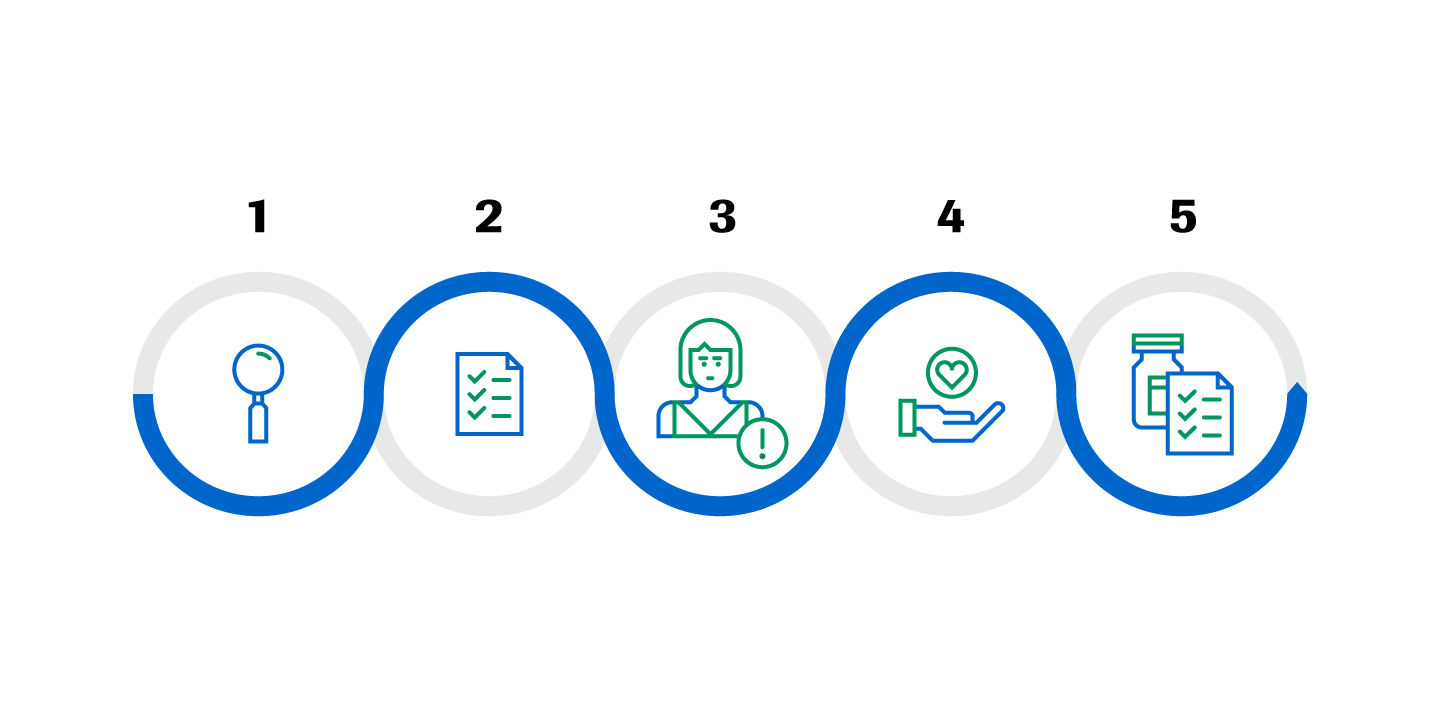37.6 million patients suffer from atrial fibrillation worldwide .
What is atrial fibrillation?
Atrial fibrillation (AF), the irregular beating of the heart’s upper chambers, is the most common cardiac arrhythmia and can often be completely asymptomatic. AF can create complications such as blood clots, heart failure and even death. The biggest threat for patients with AF is a five-fold higher risk of stroke caused by the forming of blood clots in the heart and blocked blood vessels in the brain.
There is a huge need to address under-diagnosis and under-treatment.
Silent AF is common
- 1.4% of adults >65 years may be living with undiagnosed AF8,9
- Silent AF most often presents only after serious complications of AF, such as stroke or heart failure
Unmet needs in AF patient management

1. Screening
- 37.6 million people living with AF1,2
- Expected to reach 66 million by 20503
- Many are not diagnosed due to intermittent and asymptomatic nature of the disease
2. Diagnosis
- Up to 35% of cases go undiagnosed
3. Risk stratification
- Low modest predictive ability of currently used bleeding & stroke scores
4. Therapy selection
- 21% of patients remain untreated
5. Therapy control
- Need for better therapy guidance and optimization
References
- Lippi G, et al. International Journal of Stroke 2017; 0(0):1–5
- Global Burden of Disease Collaborative Network, Results. Seattle, United States: Institute for Health Metrics and Evaluation (IHME), available at: http://ghdx.healthdata.org/gbd-results-tool
- Chugh S S, et al. Circulation 2014; 129:837–47
- Perera K S, Stroke 2016; 47(9):2197-2202
- Bakhai A, et al. J Eval Clin Pract 2020; 1-15
- Go AS, et al. JAMA 2001; 285:2370
- Friberg J, et al. Am J Cardiol 2004; 94:889
- Lowres N, et al. Thromb Haemost 2013;110:213–22
- Dilaveris PE, Kennedy HL. Clin Cardiol 2017;40:413–8
- Berg D D, Circulation 2019; 139(6):760-771
- Hijazi Z, Eur Heart J 2016; 37(20):1582-1590
- Cavallari I, et al. Anatol J Cardiol 2018; 19(1): 67–71
Article by, Roche
